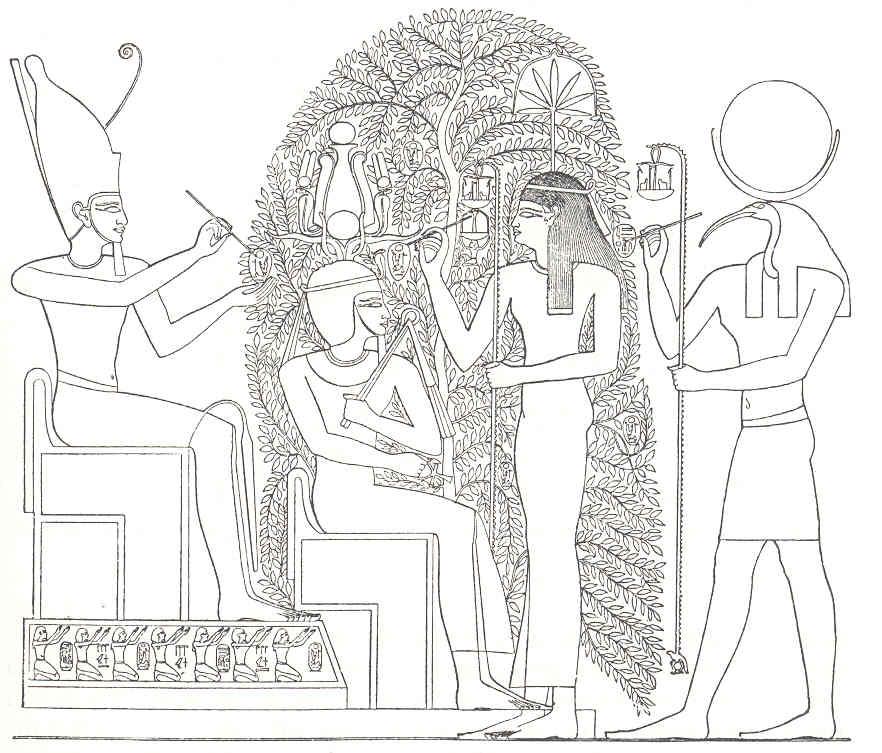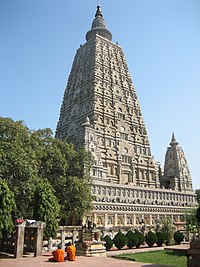 |
Ramesses II sits beneath the cosmic Ished as the gods Attum, Seshat and Thot write his names and years on its leaves. (from the Ramesseum) |
The other day I took some time out for myself to visit the local $2 movie theater. Eddie Murphy used to be one of the best comedians and I remember when people went in droves to see RAW. So feeling nostalgic about the Eddie Murphy of my youth, I decided to see "A Thousand Words". Although I had not seen any of the previews and knew nothing of it's content, I was pleasantly surprised. Overall,it was a good movie and quite funny. Not only that, it's plot centered around the Tree of Life and the book publishing industry. Specifically, the quest to publish a book to impact millions of souls.
In the movie, Eddie Murphy's character, Jack McCall, had to work through the trauma of feeling abandoned by his father, who left when he was young. This struggle led to him being closed off to his true self, the person he was meant to be. It was a story of self discovery which led to a spiritual and genetic connection through meditation and magic. These lessons were inundated with imagery of a magical Bodhi tree with falling leaves intertwined with the plot of a black man who was the top dog at a book publishing firm. Mark my words, this may be Eddie Murphy's comeback movie.
One of the central turning points in the movie is when Jack "sees the blue pearls". This leads to an epiphany just prior to his blood getting on the tree. The color blue is my favorate color so I like to hear it being talked about in a positive light. This led me to wonder what the blue pearl in this movie signified, so I Googled it. One website states that the pineal gland and the blue pearl or crown chakra are the gateway to heaven. It is said also that by meditating on the blue pearl, which is inside the pineal gland, one can eventually receive guidance from one's higher soul. The outward appearance of spiritual work on this is the "laying on of hands".
| Chakravatin, King Ashoka Chakra |
 |
| Mahabodhi Temple, "Great Awakening Temple" site of the Bodhi tree |
In the movie Jack does not speak because of this phenomena connecting him with the Tree of Life, represented by the Bodhi tree. In ancient times, Indian emperor King Asoka (304-232 BC) paid homage to the Bodhi tree at the Mahabodhi Temple, and held a festival every year in its honor during the month of Kattika. It is said that in the end times, lotus will grow here. It is also at this temple that Buddha spent 7 weeks at 7 spots meditating and considering his enlightenment experience. Several specific places here relate to the traditions surrounding the 7 weeks. In Bangladesh and India, Kartika is the 7th month which begins with the suns entry into Scorpio. This is during mid October on the Gregorian calendar and ends November 15th. In some African cultures, it is forbidden to say the number 7. So speech and absence of speech is connected with this divinity. In Egypt, Seshat is nameless. To call her name at the New Year hour is to give one power. The number 7 is taboo also among the Kolokuma of the Ijaw in Nigeria, Malinke (descendants of the Mali Empire), Mbundu, Kikuyu and Kamba (Bantu people in Kenya), to name a few. Among the Mandak and Ga, the avoidance of the number 7 is found in speech where 7 is referred to as 6+1 according to the "Encylcopedia of African Religion" (p 611).
"Among the Dogon tribe in Africa the spirit of the 7th ancestor is repronsible for world order. This spirit also wove a cloth that is a manifestation of the Word and imparted it to humanity. The word for the cloth is soy meaning "it is the spoken word". Soy is also the word for seven." states the Encyclopedia of African Religion. Also in a book by Shannon Dorey called The Nummo about the Dogon the author further connects mathematics, the word, speech, and 7 with the Dogon and Egypt. The author states "The number 22 is the measure of the circumference of a circle when the diameter is 7. At one time this proportion, known as pi, was a religios secret. The circle is a symbol of immortality and seven relates to the Master of Speech (identified with the number 7 p152)....In the Dogon religion the "word" was a symbol for DNA....The words which were in the tonu soy of the po, Amma made them come out and gave them to the Nommo: this became the cloth that cannot be broken. According to the Dogon, the rope represents the unbreakable tie Amma had established between the ancestors and their descendents. The cloth in this passage is another representation of the "word", or the DNA that is a part of all life and identified with Amma. This same symbolism appears in Catholic iconography and was discussed....in relation to priests being "men of the word" and "men of the cloth". So here again we see how the teaching of science and mathematics is passed down through story telling in African culture.
 |
| The god Osiris paints Pharaoh's name onto leaf of the Tree of Life. Karnak. |
No comments:
Post a Comment